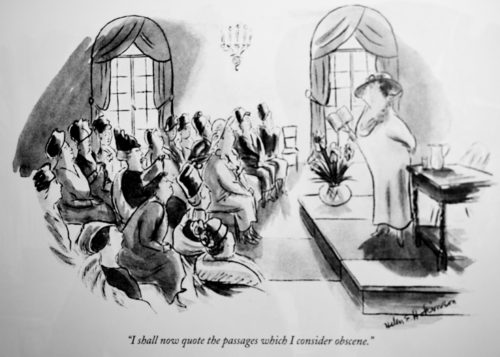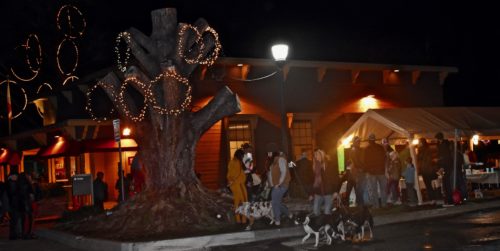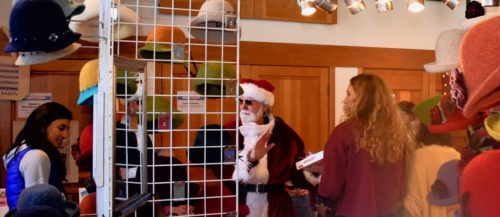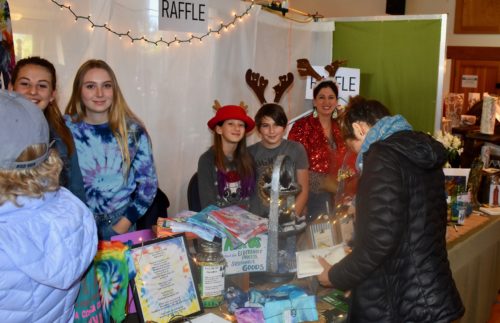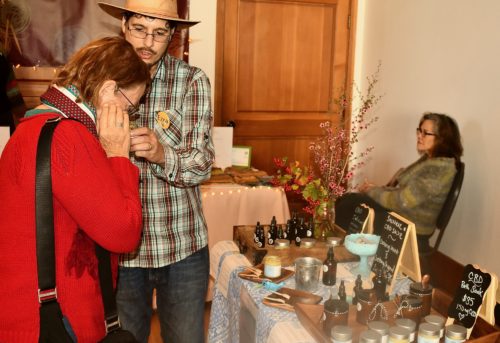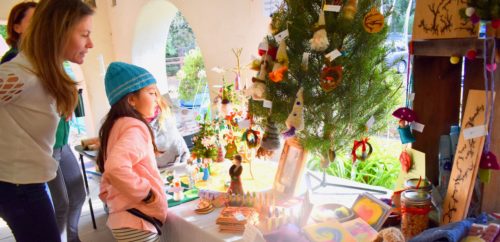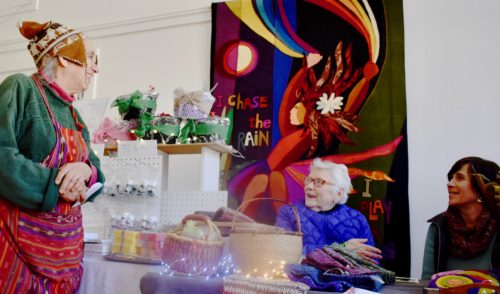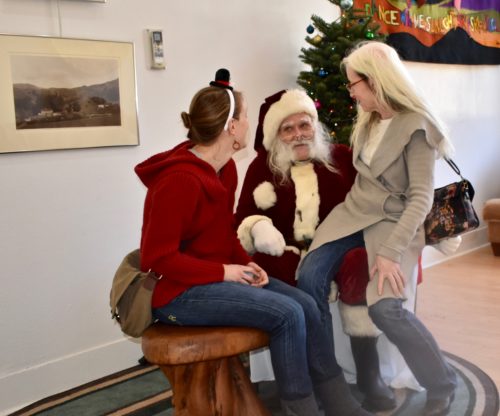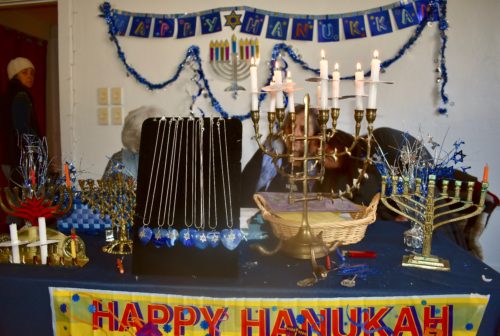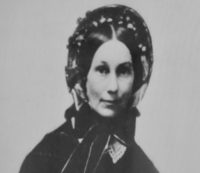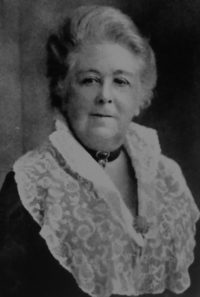Sun 30 Dec 2018
Wildlife at Mitchell Cabin: Part 1
Posted by DavidMitchell under Point Reyes Station, West Marin nature, Wildlife
[2] Comments
Caveat lectorem: When readers submit comments, they are asked if they want to receive an email alert with a link to new postings on this blog. A number of people have said they do. Thank you. The link is created the moment a posting goes online. Readers who find their way here through that link can see an updated version by simply clicking on the headline above the posting.
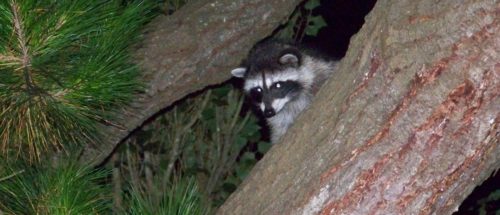
A raccoon looking down on my front steps keeps an eye out for non-family members invading his territory.
Happy New Year! As longtime readers know, I’ve periodically started off the new year with a look at the wildlife around Mitchell cabin. This year I’m going to do it in two postings, the first focusing on the mammals I’ve seen and managed to photograph. The second will feature amphibians, reptiles, and birds.
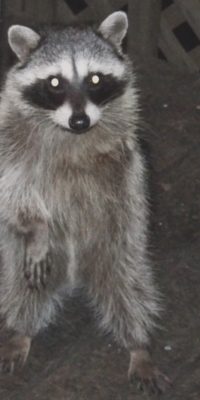
Begging for food at our door. This raccoon was missing its left front foot. Lynn took pity on the creature, dubbed it “Peanut,” and tried to make sure it got to eat without more-robust raccoons driving it away from the food.
Several raccoons show up on our deck every night hoping to get kibble or food scraps. Outside our front windows, they try to catch our attention, sometimes making noise by dragging the pads of their feet down the glass.
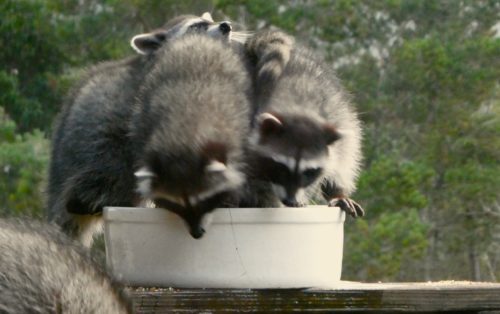
They bathe in our birdbath as well as drink from it. We’ve seen as many as four young raccoons crowd into it at one time it although its far side is 15 feet off the ground.
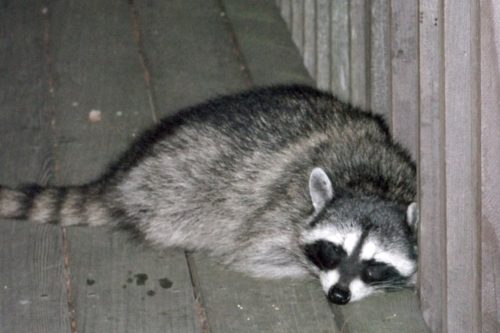
By now most of them are comfortable on our deck, and a few show up some evenings to take naps, especially those who are pregnant and need sleep.
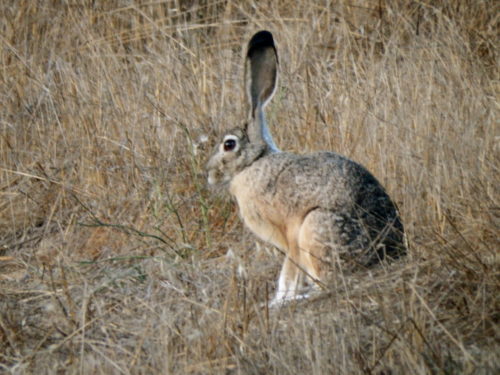
We also see jackrabbits on this hill quite often but they’re not as punctual as raccoons.
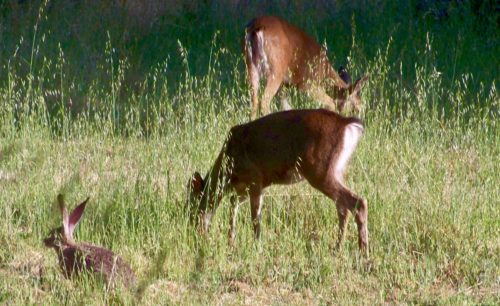
The jackrabbits manage to get along easily with our local blacktail deer. The only time I’ve seen a rabbit particularly wary around these deer occurred when a fawn wandered over to the edge of a field to sniff it. The rabbit hopped off a few yards but stuck around.
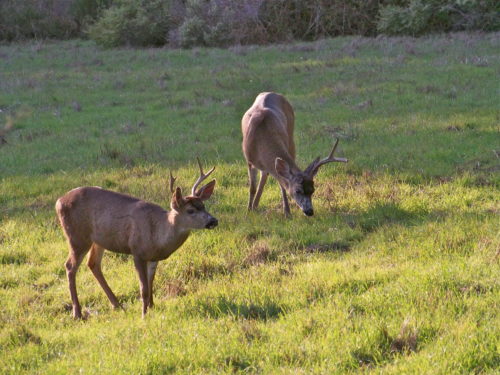
Two young bucks, the far one with an antler missing perhaps from butting heads with another buck.
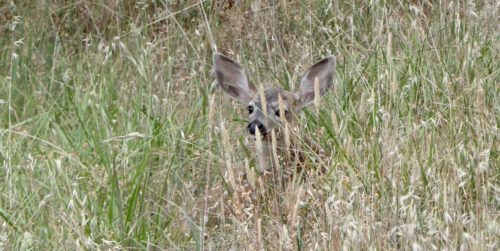
A fawn hiding in the grass. It’s fun to have blacktail deer around the cabin, but they tend to eat our roses and persimmons.
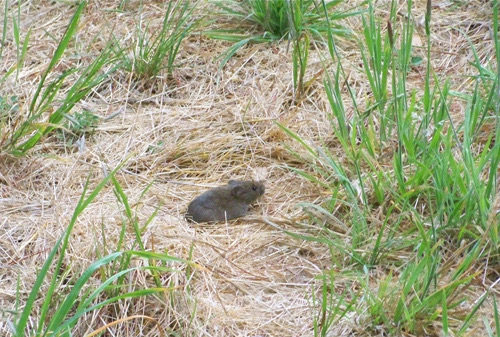
Even more of a problem in the garden are the scores of gophers that live in this hill. Their mounds perforate our fields.
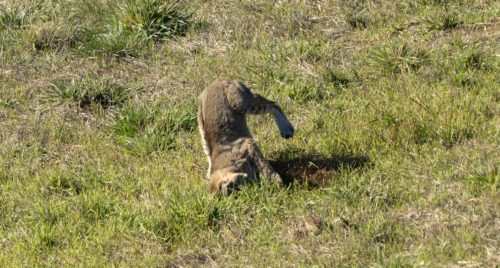
But the gophers don’t have total free run of the place. Here a bobcat pounces on a gopher leaving its burrow near our cabin.
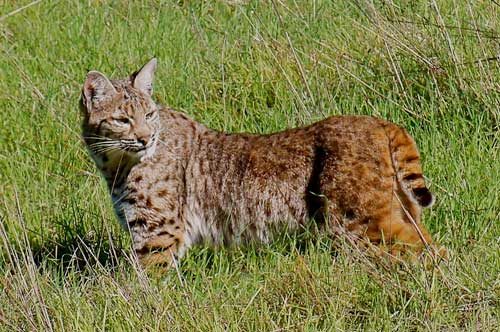
Bobcats have been far more common on this hill in recent years than they were 20, 30, or 40 years ago.
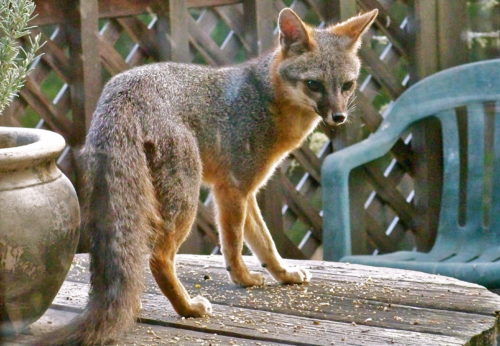
A gray fox occasionally suns itself on our picnic table. Fox populations around here regularly rise only to fall during distemper outbreaks.
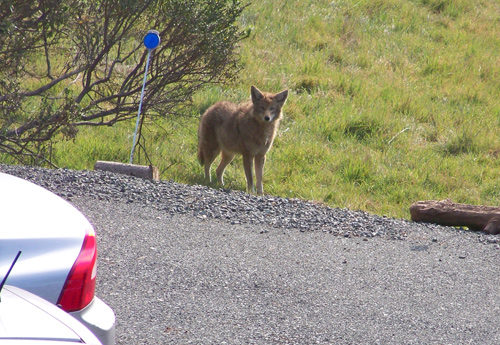
A coyote beside our parking area.
Coyotes can be seen in our fields every two or three months, but Lynn and I hear them howling several nights a week. There were no coyotes in West Marin for 40 years because sheep ranchers regularly poisoned them. After the poisoning was banned during President Nixon’s administration, coyotes began showing up here in 1983. They had spread south from northern Sonoma County, where they never disappeared.
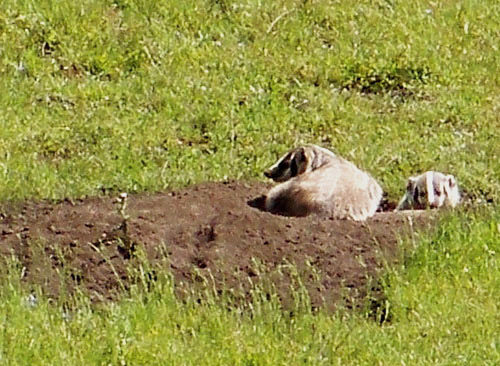
A mother badger with her kit. The most ferocious predators near the cabin are badgers. Even a bear would be no match. Badgers live in burrows up to 30 feet long and 10 feet deep, for they are remarkably efficient diggers thanks to long claws and short, strong legs. Although they can run up to 17 or 18 mph for short distances, they generally hunt by digging fast enough to pursue rodents into their burrows. We occasionally find badger burrows in our fields, but we rarely get to see the animals themselves.
Lest I leave you with the impression that on this hill it’s all “nature red in tooth and claw,” to quote Tennyson, I’ll end this posting with two examples of the many peaceful mammals living here.
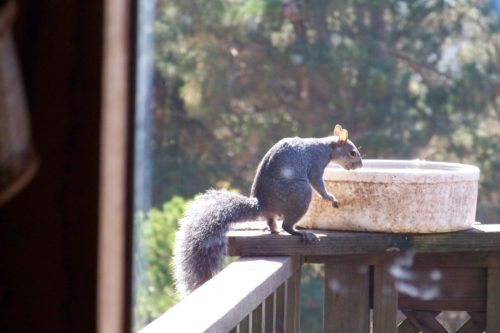
A gray squirrel drinking from the birdbath. As I photographed it through a living-room window, the squirrel began eyeing me but didn’t run off.
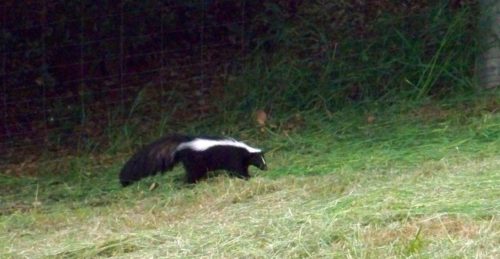
Skunks are another species that increasingly populates our yard. They’re a bit worrisome, but so far they haven’t caused a stink here.
And may you too have a stink-free new year.

